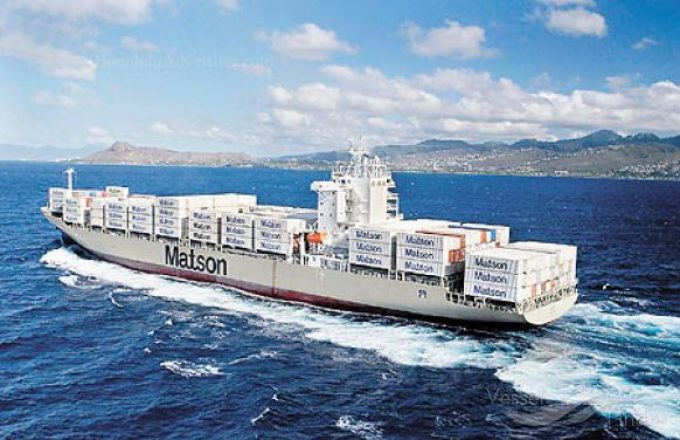Air cargo shifts capacity to where the money is as holiday season begins
Airlines are shifting capacity to Asia Pacific-North America as disruption from China’s forthcoming Golden Week ...
GM: RAISING THE ROOF GGM: IN FULL THROTTLE GZIM: MAERSK BOOST KNIN: READ-ACROSSMAERSK: NOT ENOUGHMAERSK: GUIDANCE UPGRADEZIM: ROLLERCOASTERCAT: HEAVY DUTYMAERSK: CATCHING UP PG: DESTOCKING PATTERNSPG: HEALTH CHECKWTC: THE FALLGXO: DEFENSIVE FWRD: RALLYING ON TAKEOVER TALKODFL: STEADY YIELDVW: NEW MODEL NEEDEDWTC: TAKING PROFIT
GM: RAISING THE ROOF GGM: IN FULL THROTTLE GZIM: MAERSK BOOST KNIN: READ-ACROSSMAERSK: NOT ENOUGHMAERSK: GUIDANCE UPGRADEZIM: ROLLERCOASTERCAT: HEAVY DUTYMAERSK: CATCHING UP PG: DESTOCKING PATTERNSPG: HEALTH CHECKWTC: THE FALLGXO: DEFENSIVE FWRD: RALLYING ON TAKEOVER TALKODFL: STEADY YIELDVW: NEW MODEL NEEDEDWTC: TAKING PROFIT

US domestic and transpacific carrier Matson has reported “solid freight demand, despite the muted peak season” in Q3 for its niche China to USWC service.
Preliminary Q3 results of the Honolulu-based company show volumes from China to Los Angeles edged down just 1.3% on the same quarter of last year, despite being impacted by last September’s termination of one of its service loops.
Matson will publish its full-Q3 results on Monday, but says it expects net profit for the period to be in the range of $114m and $120m, compared with $266m for Q3 22.
Meanwhile, the port of Los Angeles posted a 14% jump in loaded import containers handled at its terminals in September, compared with the same month last year, to 392,608 teu, suggesting inventories are starting to be replenished on the back of consumer demand.
The port’s executive director, Gene Seroka, attributed some of the growth to the signing of a new six-year west coast labour contract. He said: “With a long-term dockworker contract in place, we’re seeing more cargo shifting back.”
And at the neighbouring San Pedro Bay Long Beach terminals imports grew even more soaring by 19.3%, compared to last September, to 408,926 teu.
“We look forward to a moderate rebound in cargo volume through the end of the year,” said the Port of Long Beach CEO Mario Cordero.
However, it is the resilience of the American consumer in maintaining spending, despite interest rate hikes and stubborn inflation, that is seen as the main driver of the demand recovery. Matthew Shay, president and CEO of the US National Retail Federation, said he expected “moderate growth to continue as consumers focus on value and household priorities”.
He added: “Retailers have been hard at work getting holiday inventories in place to provide consumers with great products, competitive prices and convenience at every opportunity. Consumers are very resilient and continue to spend, but having said that, we know the way they are spending, and the way they are paying close attention to how every dollar goes, is evolving.
“Consumers are not spending as much, and are not spending in the same ways,” he added.
Nevertheless, the imports they are buying are still mostly coming from China, despite the China+1 trend of sourcing product from other nations.
There has been some shift away from China, but according to Mr Seroka, 53% of the imported containers coming across the LA port complex in the first nine months of the year were from China, versus 57% in 2022.
Loaded exports in September jumped 55%, to 120,635 teu, in comparison with the previous year, which Mr Seroka noted was “good news” for the US economy.
The number of empty containers exported from LA slumped 18.5%, to 235,197 teu, as carriers found themselves overstocked with equipment in Asia.
In total, September volumes at LA’s terminals were up 5.4% year on year, at 748,440 teu, but for the nine-month period were still at a considerable deficit, with 6,398,126 teu processed, down a huge 18.6% on the exceptional first three quarters of 2022.
Comment on this article